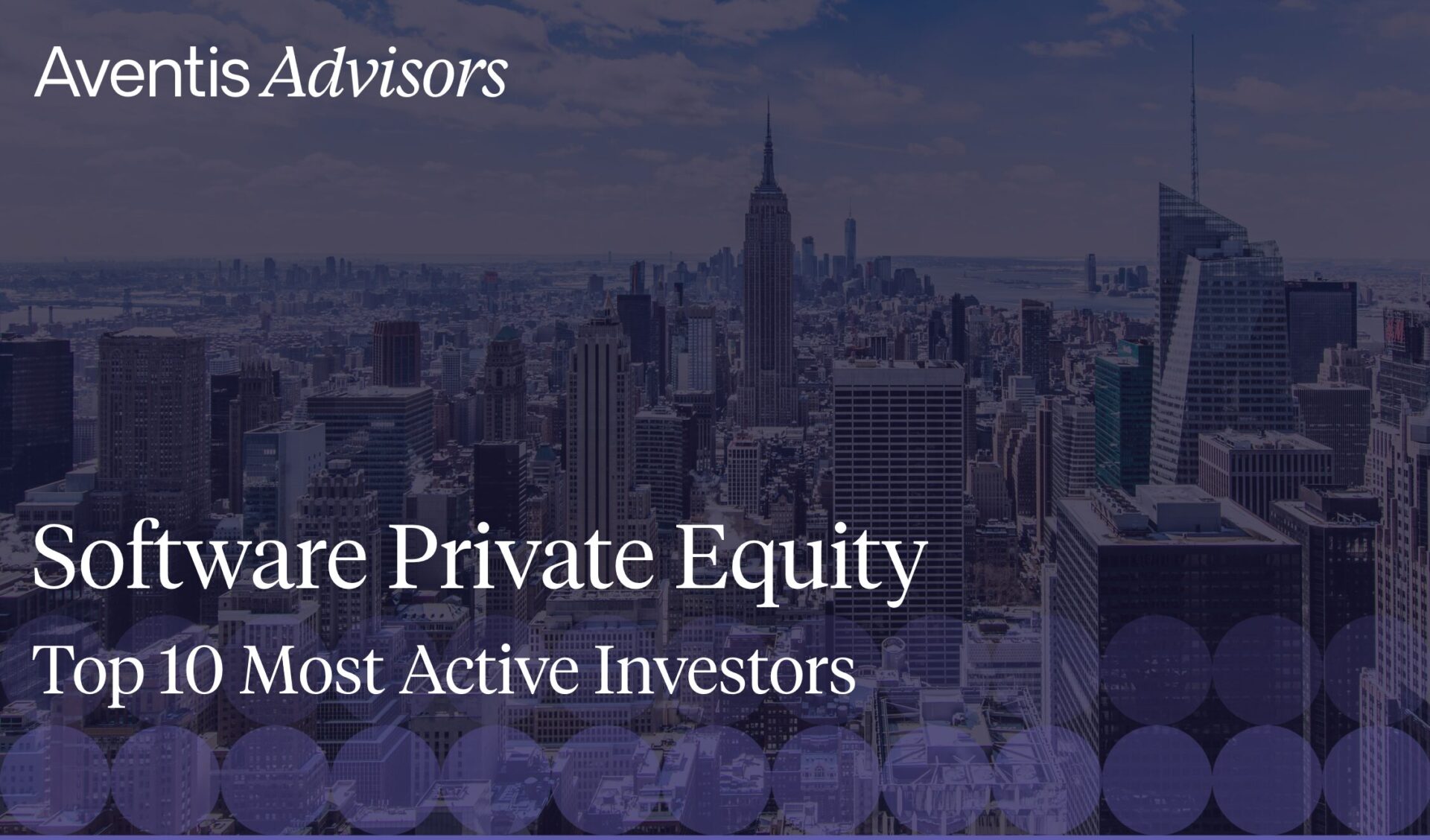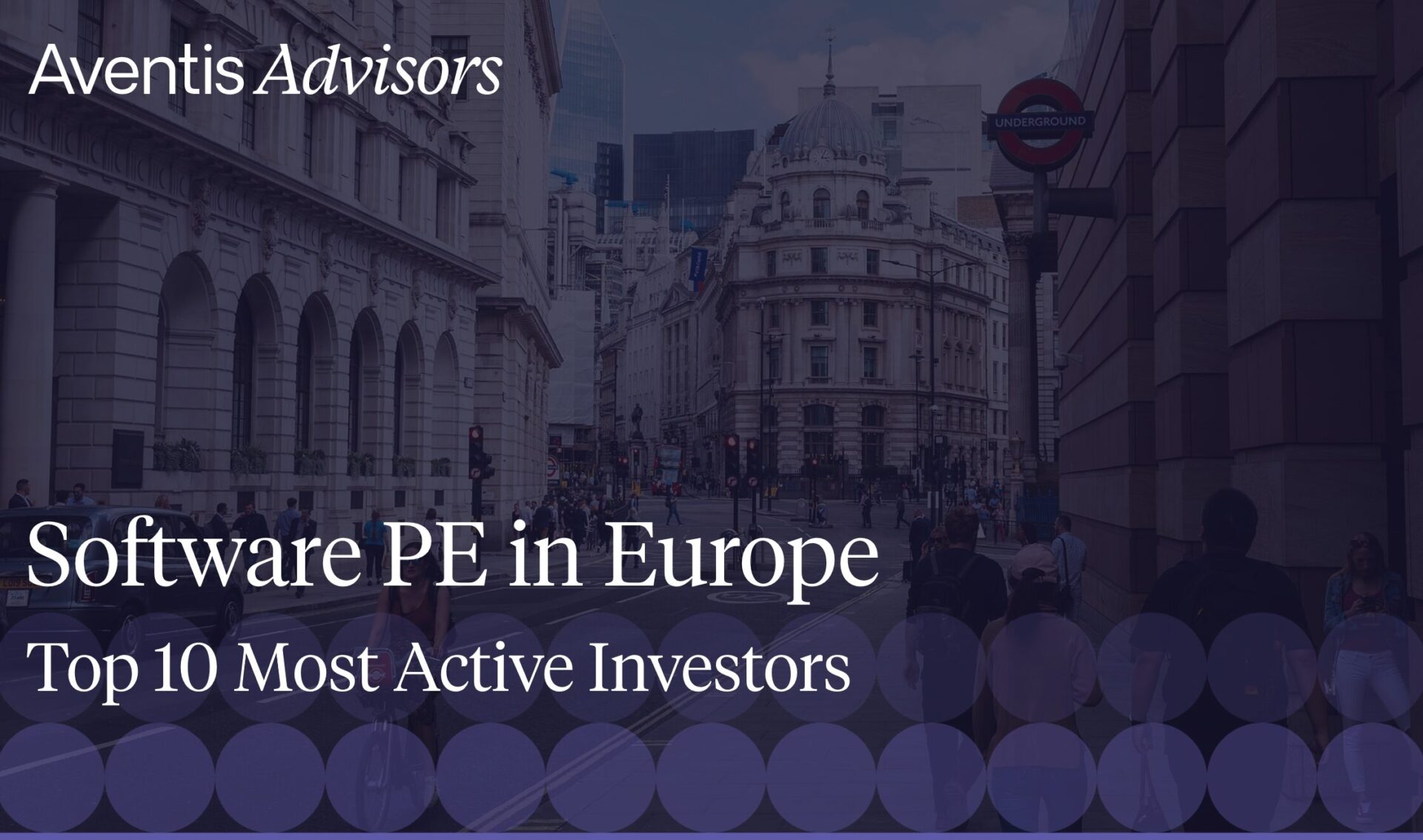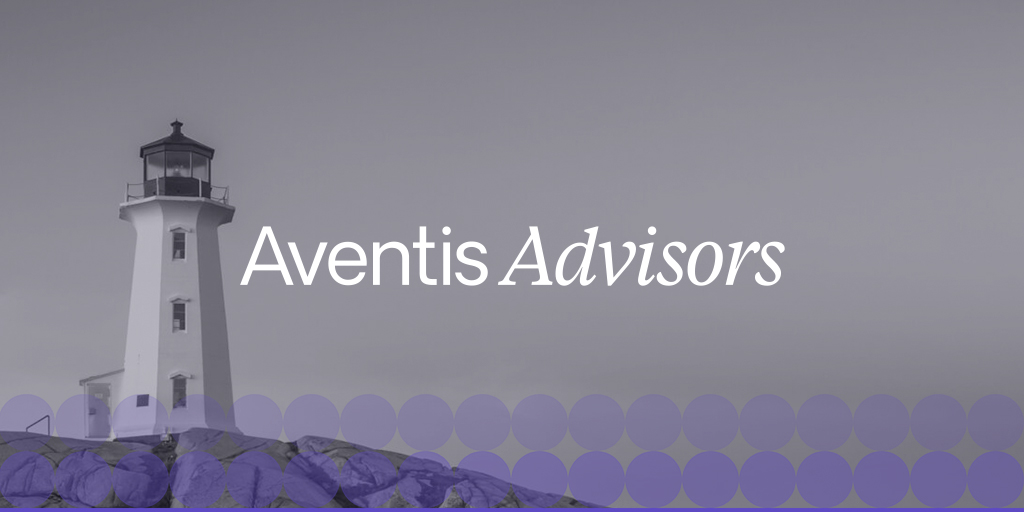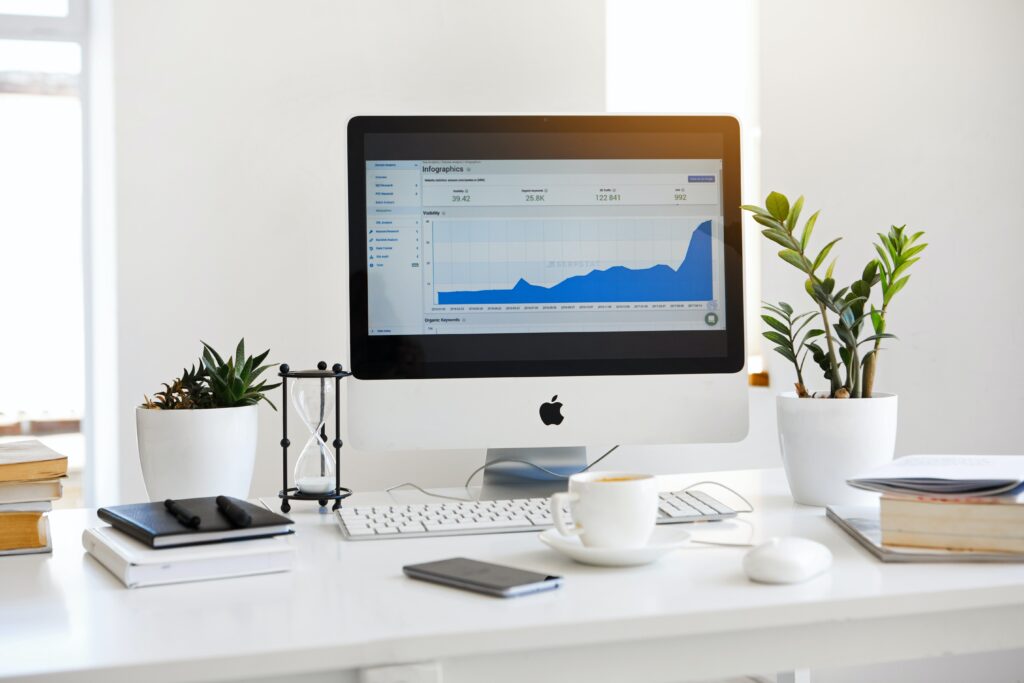On April 15, 2025, we hosted a live webinar titled “SaaS Valuations in 2025: Where Are We Headed?”. The webinar was presented by Marcin Majewski, Managing Director and Filip Drazdou, Associate. They covered important topics for SaaS founders and investors such as:
- SaaS valuations trends today in public & private markets
- 2025 outlook for SaaS valuations
- The big incoming shift in SaaS valuations
- Growth vs. profitability: What really moves the needle in 2025 for SaaS valuations?
- US vs. Non-US SaaS: Does geography affect SaaS valuations?
- The Rule of 40: Still relevant or outdated?
You can now watch the full webinar replay below. If you would like to download the presentation material used during the session, you can easily do so by clicking the download report button on the left (if you are using a computer) or by scrolling at the very end (if you’re using a phone).
Below is the full transcript of the discussion, edited slightly for clarity, flow, and briefness.
Welcome and Introductions
Marcin Majewski:
Welcome to our SaaS Valuations Webinar 2025. I’m Marcin Majewski, joined by Filip Drazdou. We’re thrilled to have you here. This is the first webinar we’re organizing at Aventis Advisors, and we’d love your feedback afterward.
Filip Drazdou:
Hi! I’ve been working at Aventis for over five years now, mainly on transactions across software and IT services. I also lead much of our research. When we started publishing on SaaS valuations, we never imagined it would become such a widely-used reference.
Where Are SaaS Valuations Now?
Marcin Majewski:
We’re starting with one of our favorite charts: 10 years of SaaS valuations. This includes:
- EV/Revenue multiples for the largest U.S. SaaS companies
- Global sample of over 100 SaaS firms
- Private M&A transaction multiples
Up to COVID, we all know what happened — there was a boom in valuations following the U.S. election, and then a rapid decline. We’ve seen fewer deals closing in Q1 2025, and we expect this trend to continue. The big question: is this the bottom? Will we bounce back? Or is there still more downside?
There are plenty of reasons for optimism — SaaS penetration is still low, demand for automation is high, labor markets are tight — but there are also reasons to be cautious.
Filip Drazdou:
If had to make a bearish case, I’d go back to fundamentals: growth, profitability, and discount rates. Growth is slowing. If a recession hits, which may or may not come, it may slow more. If you’re growing at 10% and have 10% margins, you’re at a 50x EBITDA multiple. In a low-growth, high-rate environment, that’s tough to justify.
EV/Revenue to Growth – EVRG ratio
As we analyzed this aspect, we set out to create an alternative metric. While traditional stocks often use a price-to-earnings-to-growth (PEG) ratio, we wanted to see what an EV/Revenue-to-Growth metric might reveal (EVRG)—essentially, what the market is paying per unit of growth.
Interestingly, this ratio has been rising steadily since 2019, with a major spike in 2021 — which, in hindsight, was likely overextended. It has since corrected and now sits at a relatively stable level around 40. However, this stability masks a key issue: in 2020, companies were growing at 25% when this metric was at 40. Today, those same companies are growing at just 14%. If this deceleration continues, it stands to reason that valuation multiples will need to follow.
Marcin Majewski:
And that’s irrespective of global conditions. If growth rates go down, valuations will follow. SaaS business model and SaaS companies are rewarded for growth — if that disappears, the premium disappears too. Well, unless AI really takes up. We will see about that.
Macro, Trade, and Inflation Risks for SaaS valuations
Filip Drazdou:
So next, we wanted to touch a bit on the global economy and tariffs, and kind of what’s the impact for SaaS companies. How do you find yourself in this new environment? Marcin, tell us more.
Marcin Majewski:
I’m not going to say anything original when I say the U.S. has been an importer of goods for many years. We illustrate that the flow of goods was toward the U.S., which has been paying for what it imports with its currency
The question is, how does that balance? Goods flow to the U.S., but the currency has to be reinvested. So the world — in particular, China and other surplus countries — have been investing heavily in U.S. securities. This huge recycling of U.S. dollars funded the stock market, the venture capital industry, and the U.S. Treasury. The whole world funneled money into the U.S., and in return received securities for the work and resources they sent.
Now, what we are expecting — or what’s happening now with the new US administration — is a decline in the flow of goods to the U.S. And that’s not where the story ends. If the money flow from the U.S. to the world slows down, then countries will invest less in U.S. assets. The world will own fewer U.S. securities — reducing demand for equities, VC, and private equity.
This dynamic doesn’t affect the rest of the world the same way. In fact, what we’re seeing in the U.S. is quite different from what’s happening in parts of European industry. The supposed uniqueness of the American SaaS industry might not be so unique — it may have been driven by trade flows and industrial surplus, not just product innovation.
As the U.S. diverts resources from high-risk tech ventures into traditional industry, this could change. And to illustrate that, we’ve got an interesting case study coming up. In the next slide, we show a contrast between two companies — a comparison that tells volumes
Filip Drazdou:
Salesforce and SAP — which are both major players, and actually have quite similar enterprise values and KPIs. They grow around 10% and have margins around 20%, so pretty similar right now.
We examined how their multiples developed over the past 10 years. Throughout that period, Salesforce has held up to a 100% premium in revenue multiple compared to SAP. But in the last couple of years, that started to change. The gap started closing.
And recently — late 2024 and early 2025 — SAP actually overtook Salesforce in terms of revenue multiple. I think it’s a combination of European stocks going up and American stocks going down. But overall, we’re seeing convergence. We’ll talk a bit more about that later and show what it looks like across a bigger sample. But this is just a great example of how the original SaaS company — one of the pioneers — is now trading lower than SAP, which is supposedly a more “old-school” business.
For me, looking at this, I’d say SAP has slightly better fundamentals. In terms of stickiness — which we talk about a lot in SaaS — I think SAP is a better product. And its position in the European market is more stable.
I think what we may see in the coming years is companies buying more software from their own region — a bit of a fracturing of the global economy and an attempt to rely less on exported software, if you will.
2025 SaaS valuations outlook
Marcin Majewski:
We expect:
- Slower economic growth overall: I think we can agree on that. As more stress and uncertainty and barriers to trade are introduced into the global economy, and globalization reverses, this will translate to slower revenue growth for SaaS companies. So we can expect enterprise clients to be reluctant to invest in SaaS, and we can expect sales cycles to be longer. How does that translate to valuations? Obviously: negatively. Forecasts for companies will be slashed, and we will see a decline in valuations.
- Sticky inflation: Next — and this is more nuanced — is that we are already seeing thick inflation in the global economy. However, changes in trade balances between countries will have varying impacts. As the U.S. introduces more barriers to trade, it will face more resilient inflation, whereas the rest of the world may expect a decline actually in prices of goods, as there is more slack in the economy, more goods are available, and there is less demand from the U.S. So we might see, even in countries like China or some in Western Europe, a level of deflation driven by what’s happening. If we see deflation, we’ll definitely see slashing of interest rates. The ECB will be more dovish than the Fed, which will translate into a lower cost of capital in the Eurozone, for instance. That’s why the impact on valuation is nuanced and should be considered on a country-by-country basis. But our concern is that U.S.-based companies will stagnate in terms of valuation, while European, Chinese, or broader APAC companies will see an uptick.
Is there something, Filip, we can say to make a more upbeat statement?
Filip Drazdou:
Yes. I think — like with any recession — and I think this one is long overdue, there will be a shakeout. For companies that have a good product and strong product-market fit, this is a great opportunity to shine and leave behind the ones that have been overspending thanks to VC capital.
I think this gives bootstrapped founders in particular an opportunity to outsmart the highly funded competitors, especially now that funding will be harder to come by. Product-led growth companies — the ones close to their clients — will have their moment to shine.
The Growth vs. Profitability Dilemma for SaaS businesses
Filip Drazdou:
Yeah, I think it’s good to pick up from here on the growth vs. profitability dilemma, which is always present in SaaS companies. We all know the Rule of 40 — EBITDA margin plus revenue growth should exceed 40%.
Right now, in this uncertain environment, many founders are wondering: should I focus more on profit, or on revenue growth?
So we ran a bit of analysis to see what the market actually rewards right now. We built a few classic scatter plots — plotting revenue growth against revenue multiples, and EBITDA margin against revenue multiples.
As before, and I think many people agree, revenue growth is still more important in today’s market. A 10% increase in revenue growth adds 1.6x to revenue multiple. EBITDA margin, by comparison, doesn’t have such a significant effect.
So if you’re facing a tradeoff — say, one percentage point of growth vs. one percentage point of margin — then looking at current data, it’s still pretty clear that growth wins.
Marcin Majewski:
We also simulated three company types: high-profit low-growth, balanced, and high-growth no-profit. The highest long-term valuation came from the growth-focused firm. Even with a 25% discount rate, growth compounding wins.
If a company manages to reinvest some of its cash flow into growth and hits 20% growth and 20% EBITDA margin — that’s a Rule of 40 scenario — it can grow to $24M in revenue and $5M in EBITDA after 10 years.
The second case — steady 20% growth and 20% margin — grows to $52M in revenue and $10M in EBITDA.
The last one, even though not profitable initially — eventually becomes profitable. If it pushes and front-loads a lot of investment into growth, it can reach $104 million in revenue over 10 years and generate margins of 20% by the end of that period. So in the end, all three companies are modeled with 20% EBITDA margin after 10 years. We then asked ourselves — what would their valuation be today? Which one is a better buy? Or, more practically, if you’re preparing a company for sale, what KPIs should you aim for to maximize value?
Looking at the results on the right of the chart — the high-growth company, using a very simple DCF model, is worth almost double the low-growth company. And this holds true even when applying a high cost of capital discount rate — 25% in our case. The takeaway is clear: growth has tremendous appeal in the SaaS business model.
US vs Non-US SaaS: The Gap is Closing
Filip Drazdou:
Before wrapping up, we wanted to touch on one last point: the impact of geography on SaaS valuations. For a long time, the conventional wisdom was that being listed or headquartered in the U.S. — or even just selling into the U.S. — meant higher valuations.
That was certainly true through 2021. But now, for the first time, we’re seeing a convergence in median valuations between North America and Europe.
During the 2021 bubble, there was a huge premium for U.S.-based SaaS. But after all the changes Marcin discussed — tariffs, global capital flow shifts — things look different. And that new reality may stick. So for founders considering IPOs or investment destinations, it might not be as obvious as it used to be. The U.S. valuation premium may no longer hold.
Marcin Majewski:
It’s no longer clear that being US-headquartered guarantees a higher valuation. Regional inflation, interest rate policies, and AI readiness will define future premiums.
Central bank policy will also definitely influence valuations over the next few quarters. We’ll see what the Fed does — whether it injects more liquidity into U.S. stock markets or the broader economy. If that happens, we might see a rebound in U.S. stock prices. But again, we don’t know what the new US administration will do with tariffs — we’ll find out in 90 days. If participants are interested, we could do a recap around that time — say, 90 days after Liberation Day.
It’s been a time of great uncertainty over the past few weeks, and I don’t think it’s ending soon. We’re all trying to make sense of what’s happening and access timely information — but, as I mentioned earlier, no one really knows.
So for now, it’s a period of major uncertainty — and there’s a big chance this is just a short blip, and U.S. stocks could come back. But honestly, no one knows. A lot of equity strategies have been wrong in their forecasts. I wouldn’t even try to forecast — only time will tell.
Looking at what’s happening in the global economy and the financial markets — and taking into account the history of previous financial crises like 2009 or the dot-com bubble — I think valuations are still elevated. Very high by historical standards.
And I think there’s still room to go lower before we hit bottom — maybe even 40% from current levels. Filip, we often talk about this in our internal discussions: when we look at the NASDAQ, we still see 30–40% potential downside.
Should SaaS founders wait or sell?
Marcin Majewski:
This brings up another important point: a lot of founders might be feeling scared or paralyzed right now. But if you have a good term sheet on the table, and even if valuations might drop further, maybe it’s better to take the deal and de-risk. Because there are more reasons to expect downside than upside.
Strong, fast-growing companies can afford to wait — but others might not. It’s not helpful to look back and say “last year was better.” Maybe those times won’t return — at least not anytime soon. So before we see a bounce back, I think we’re in for quite a ride downward.
And yes, tariffs — tariffs, tariffs, tariffs. That’s the topic of most conversations in business circles these days. They’re not going away. What I can say about this new administration is that it’s quite fundamentalist in approach. A lot of people in it have tariffs high on their agenda.
So I wouldn’t delude myself into thinking this is temporary. Every business is affected — even SaaS businesses — although in different ways. Each founder needs to assess the tariff impact for themselves. But overall, the consequences will be mostly negative. Some companies might be spared. Some might even benefit. But the general trend is not favorable.
Filip Drazdou:
If your company is facing stagnant growth, now may be the right time to explore strategic exits, especially while valuations are still relatively high. Historically, downturns don’t offer better conditions for sellers.
Final Thoughts & Takeaways
Filip Drazdou:
On AI: short-term upside, long-term commoditization. AI add-ons might be $10–20 per user now, but margins will compress. SaaS will blur with AI-native applications.
Marcin Majewski:
It also lowers barriers to entry. Building software is cheaper. Relationships and business-specific integration will matter more.
On professional services: they were traditionally discouraged. But as SaaS multiples compress and AI augments service delivery, services may regain appeal — especially with hybrid models.
Marcin Majewski:
- We are unlikely to see COVID-era valuations again.
- Valuations remain historically elevated but face more downside risk.
- Growth remains king. Invest in it — wisely.
- US valuation premium is fading. Geography matters.
- AI is transformational, but it lowers moat defensibility.
Q&A Highlights
On AI valuations: AI will be a standard. It may boost margins short-term, but long-term it becomes a commodity. SaaS companies must integrate it meaningfully into workflows.
On digital tariffs: Very unlikely to be feasible. But nations are moving toward tech sovereignty — regional clouds, secure infrastructure, and more local providers.
On valuation of hybrid SaaS/services models: Valuations used to penalize services, but now, with SaaS multiples lower and AI-enhanced service delivery, hybrid models seem viable and even encouraged sometimes.
Why you need a SaaS M&A advisor
Monitoring SaaS company valuations offers important insights into market trends and aids in timing your exit strategy. However, each SaaS business is unique, much like every founder’s journey. Therefore, it’s essential to consult with experts in the SaaS M&A landscape, particularly advisors who specialize in the SaaS sector and can understand your unique circumstances.
SaaS M&A advisors understand how to navigate market dynamics, valuations, and coordinate all the necessary workstreams. While you concentrate on running your business, SaaS M&A advisors work diligently to ensure that no detail is overlooked and advocate for the best possible deal. Their success is directly linked to yours through a success fee structure, and their influence on the final sale price can therefore be substantial.
About Aventis Advisors
Aventis Advisors is an M&A advisor for SaaS companies. We believe the world would be better off with fewer (but better quality) M&A deals done at the right moment for the company and its owners. Our goal is to provide honest, insight-driven advice, clearly laying out all the options for our clients – including the one to keep the status quo.
Get in touch with us to discuss how much your business could be worth and how the process looks.




